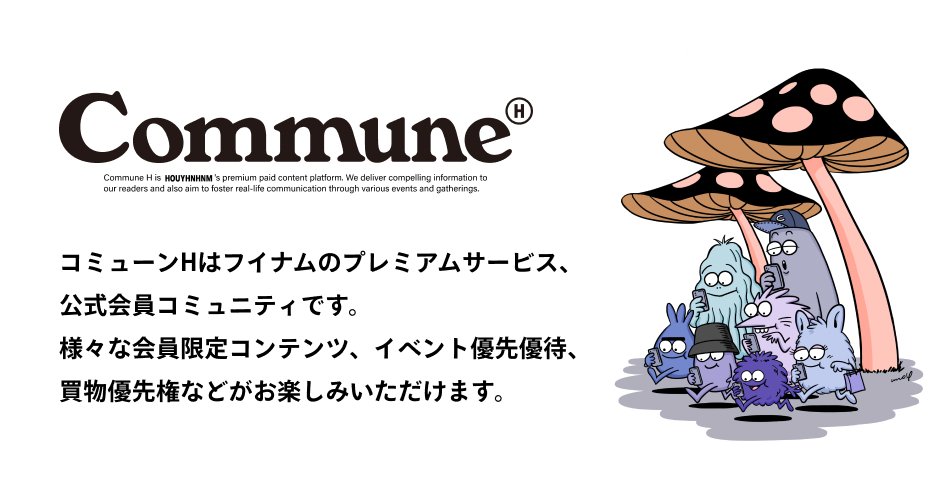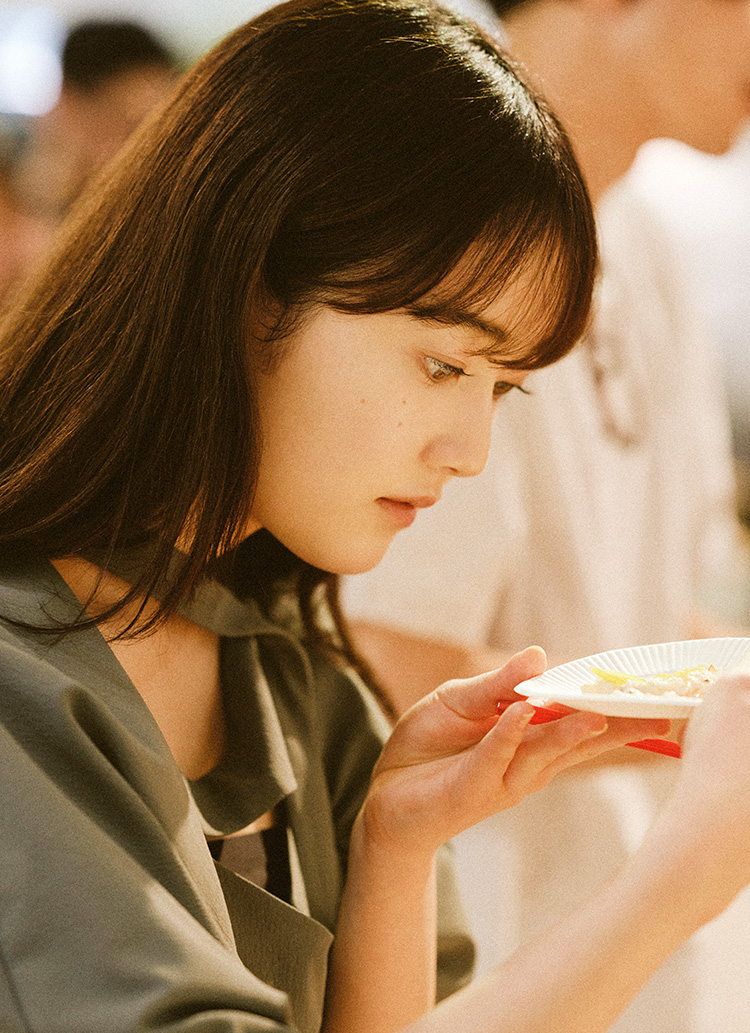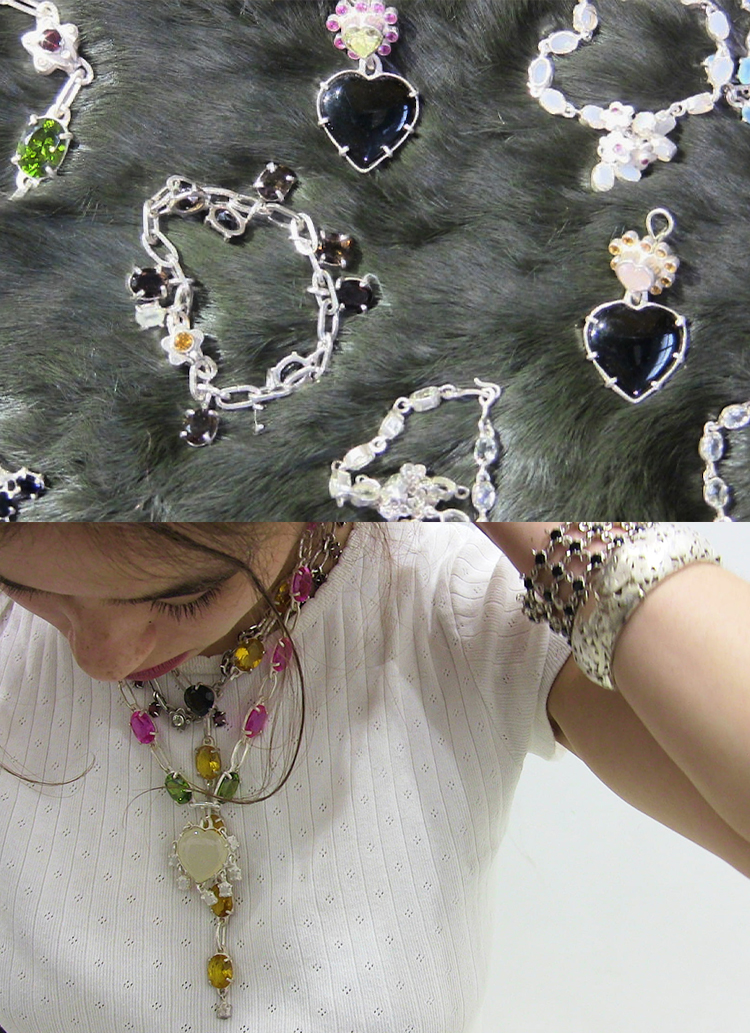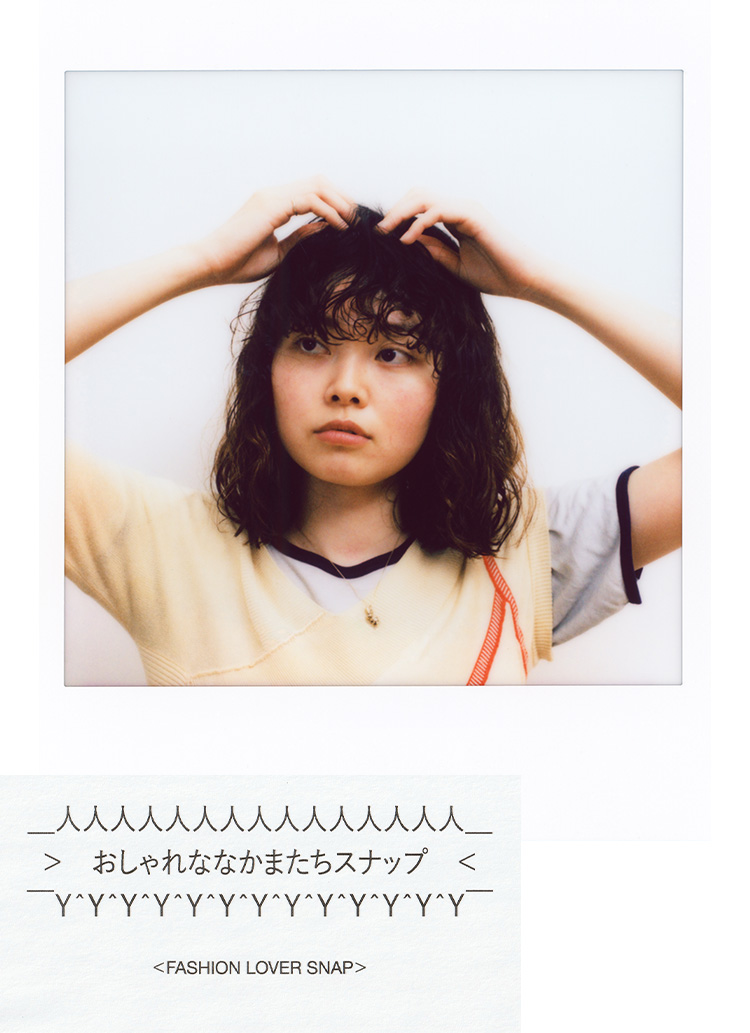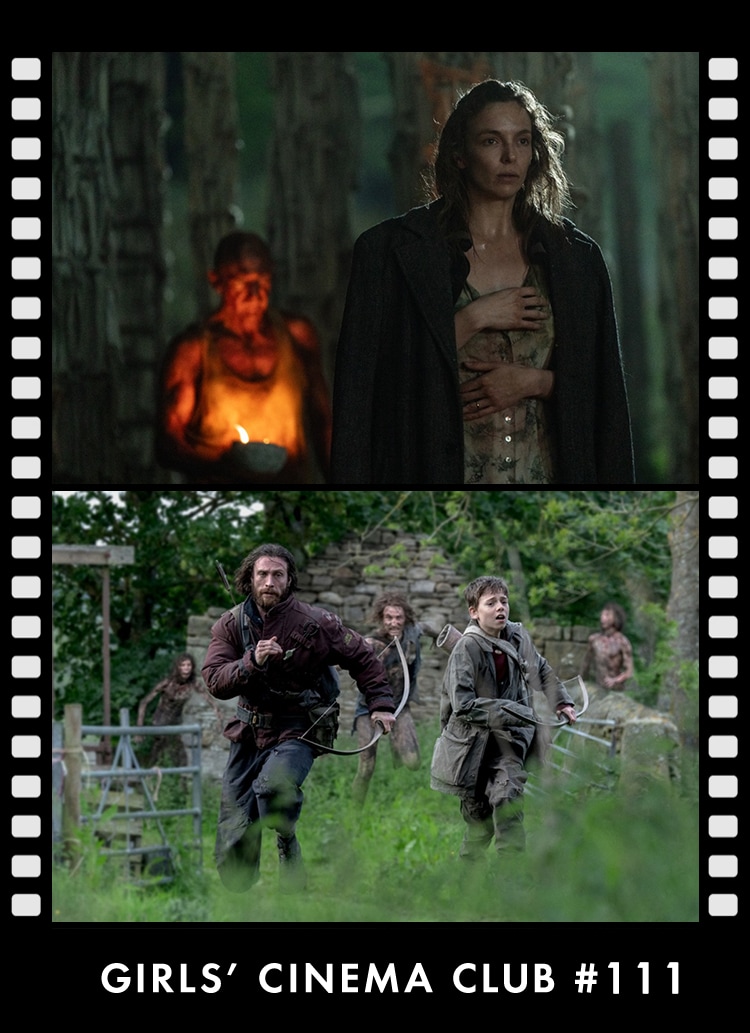Manhattan Portage and Technics have released collaborative items. The lineup includes three record bags and two T-shirts.
Manhattan Portage is known for its messenger bags, but the company has also offered a lineup of bags for DJs since its establishment in 1983. On the other hand, Technics is a brand of audio equipment and turntables used by DJs all over the world. Therefore, this collaboration between the two companies can be called a long-awaited collaboration for DJs and record users.
Furthermore, the collaboration item was supervised by MURO, a bag filled with the ideas and experience of Japan's world-renowned King Of Diggin'. We interviewed MURO, the supervisor of this collaboration, about the record bag, and the conversation began with a series of episodes related to New York and DJs, which became a "King Of Diggin' secret story.
Photo_Satoru Tada
Text_Tetsu Sumida
Edit_Seiya Kato
PROFILE
King Of Diggin', the pride of Japan to the world, has been active with KRUSH POSSE and MICROPHONE PAGER since the late 80's, and has expanded his activities as "the world's number one Digger" in production and DJ from underground to major labels, as well as worldwide. He has been expanding his activities from underground to major labels and worldwide. He has released many official mixes for the label and has gained tremendous support both in Japan and abroad. Every Wednesday from 21:00 on TOKYO FM MURO presents "KING OF DIGGIN'" with a new mix every week. He is also the designer of "RECOGNIZE," a brand that fuses music and fashion.
Instagram:@dj_muro
I see that your request was reflected in the shape of the record bag.
MURO: Yes, that's right. I had it made from scratch. But actually, there was a bag that became a sample. A friend of mine used to run a pop-up store, and when I went there, I saw an old "Technics" record bag hanging on the wall. I thought, "Wow, this brings back memories. I used to have one of these," and I bought it and went home. It had the Techniques logo embroidered on it, and there was a crossed string on the side to adjust the size of the bag. Just after that, we had a meeting for this record bag, so I took the bag with me. I presented it as a sample and made various requests, such as whether or not I needed this or that.
The flap has a slit in it so that you can pull out the handle when you carry it like a tote bag. I think this is an unusual specification.
MURO: That's right. The "Technics" bag in the example was also made in this way. This was a common specification for DJ bags in the past. I requested it because you don't see them very often these days.
What were the other points you focused on this time?
MURO:We wanted to make a 7-inch size bag in addition to the 12-inch size, because there are not many 7-inch record bags. Among analog DJs, 7-inch records have been the mainstream for the past 10 years or so. I thought that there would be a great demand for these bags.
The collaboration between "Techniques" and "Manhattan Portage" includes three types of shoulder bags that can hold records and two types of T-shirts. All bags are made of 1000D CORDURA® Classic Fabric.
What is the point of the largest type? I think this shape is a basic type of record bag, but what is MURO's special feature?
MURO: We were particular about the pockets for cartridge cases, but the most important point is that it is tall enough to hold headphones on top of the records. I measured the height of the bag to make sure it was the right size to hold the headphones I use, but there was another reason I wanted to make it taller. I wanted to make it so that it wouldn't look like a record bag at a quick glance.
It certainly looks a bit smaller than a regular record bag.
MURO: That's right. The width looks compact because of the height. Lately, when I go abroad, there are so many lost baggage cases, and records are sometimes stolen. If you know it's a record bag, you have to worry about that, too. There are rumors that at some airports in Europe, only rare vinyl records are taken. There are even people who are that fanatical! (laughs). With this bag, I thought I could bring it on board and there would be less worry about it being stolen.
This record bag is a triple collaboration, so to speak. How did such a collaboration come about?
MURO: "Manhattan Portage" wanted to make a record bag, and they asked me to be involved in the form of a supervisor. When I went to the meeting, it sounded like an intimidating proposition to make a record bag for "Technics.
Do you still have a special feeling for the Technics brand?
MURO: That's right. I have never used a turntable other than "Technics. Even now, when the turntable in my store is a different manufacturer, I ask them to change it. If possible, I ask them to change it to a Technics turntable. The feel of the arm and the pitch are different, so it's a different thing.
Do you feel differently when you see the Technics brand name?
MURO: It's different. It makes me want to put it next to the turntable (laughs).
You mentioned 7-inch earlier, but when I think of MURO's DJ work, I have a strong image of 7-inch.
MURO: When I first went to New York in 1993, I saw Biz Markie and Kid Capri DJing. I was so shocked that I went to the flea market the next morning and bought all the 7 "s. 7 "s are short songs, so you have to change them rather quickly. But Biz Markie and Kid Capri had been doing quick mixes since then, changing songs in 4 or 8 bars. I was taken by that style. At the time, there was no one doing that in Japan. There were reggae DJs who used 7-inch, but there was no one playing 7-inch in other genres yet. Right around that time, I started playing regularly at a box called "CAVE" in Shibuya, and when I started playing on 7-inch, everyone was surprised. A few years later, when Kid Capri came to Japan, I went to his hotel room to interview him, and the hotel room was filled with records.... He brought all these records with him to Japan! I was so impressed. I knew I had to bring them to the site. After that, I started bringing a lot of records with me.
MURO: The vinyl record market has recently experienced a resurgence, to the extent that it is now considered a boom.
MURO: It's just that I can only do so much. But I am glad that everyone is inspired by the sound of the record. Especially the number of young people is increasing. A decade ago, it was rare to see young girls in record stores, but now there are girls in school uniforms digging for records. What kind of records are they looking for? I feel like talking to them (laughs).
What do you think is the appeal of the record medium?
MURO: You don't just press one button to make the sound. First you have to go to the store to buy it, cut the shrink wrap from the shield, take the record out of the sleeve, put it on the turntable, and place the needle on the turntable, and only then does the sound come out. There is such a process, isn't there? In that sense, the sound that reaches the ear is different from the sound made by a single click. I think that is what makes it fresh for young people.
I think this record bag might be easy to use for young people who are just starting to buy records. Incidentally, Manhattan Portage, the company that produced this bag, also has its roots in New York, and your musical roots are also in New York, aren't they?
MURO: I still adore this place. I think it's a city I'll admire for the rest of my life. The first time I went there was in 1993, which I mentioned earlier. There was a convention called Music Seminar in the summer of that year. Musicians from all over the world were invited and there was a showcase to introduce young musicians, and the first time I was invited was with MICROPHONE PAGER. I was working part-time at a general store called "STARRICH" on Fire Street at the time, and when I asked for time off because I was going to New York, I was told to go and buy some stuff. I was given a credit card, and I went shopping with it.
What did you buy?
MURO: At that time, there were no Gap or Timberland stores. Moreover, size XL was not sold in Japan, so I bought such items.
You went to record stores and clubs at that time, didn't you?
MURO: That's right. I dubbed about 10 of my own demo tapes and took them with me, pockets stuffed to the gills, and when I saw an artist, I would give them a listen! When I saw an artist, I would hand them to him or her and say, "Listen!
What was the most impressive part of town?
MURO: I think the first one is downtown. Lower East Side, that area. Brooklyn wasn't popular yet. Downtown Manhattan was still going strong. I had a friend who lived there, and he let me stay there, and I would buy things. There was a box called "APT" in an area called Meatpacking, and it was a good box, and I got to DJ there a few times, which was a really valuable experience and a treasured memory.
I think that the messenger culture was already thriving in New York at that time, although it was not until much later that it became popular in Tokyo. Was it close to the hip-hop scene?
MURO: I think there were. There were many black messengers, and I saw them riding bicycles with messenger bags with fluorescent yellow tape on their backs. I miss that feeling, too. I was surprised to hear later that there were also DJ bags in the early lineup.
Manhattan Portage was founded in the East Village. Was there a DJ culture in that area as well?
MURO: There were quite a few record stores. DJs used to hang out there, so I made a bag for DJs at their request. Records are heavy. I guess they wanted sturdy bags at that time.
MURO: Recently, some long-established clubs have closed, and it seems that Tokyo's clubs and nightlife culture are at a major turning point.
MURO: I think the way people play has changed. The number of high-fiber and other small establishments is increasing, while the big-box venues are becoming more like watering holes. But the way to play and enjoy music changes with the times. I myself started out in a roller skating rink. There was a roller disco in Itabashi. I wanted to go to a disco, but I was in junior high school and couldn't go. Then I went to a roller skating rink with my friends, and there was a DJ booth with a good DJ, a cool music selection, and the people dancing behind Shingo Kazami in the middle were break dancing. That was shocking. That's how I got into it. Roller disco was popular in the U.S. in the 80's, and it seems to be getting popular again now. So I think it would be interesting to have a party using a skating rink again, like a roller disco. Dame Funk of Stones Throw did a party at a skatepark in Korakuen 4 or 5 years ago. In Detroit, Moody Man rents out a skatepark and has a big party every year.
I would love to see that happen. I'm still surprised that you got your start as a DJ at a skate park.
MURO: The music playing in Itabashi was also black. At that time, I rented the records I checked out there from a rental record shop and recorded them on cassette tapes. I started mixing on cassette tapes. There were such things as double-deck boomboxes, right? I had one at home that was like a portable record player with a record player on top. When I pressed the play buttons at the same time, the sounds were mixed together and I thought, "Oh, now I can mix," so I piled up the cassette tapes and started making mixtapes.
I didn't realize that! In a way, it is very hip-hop.
MURO: I wanted to make a nonstop mix somehow. At the time, I was given a cassette of a DJ's nonstop mix for my birthday at a disco, and I first became obsessed with the allure of that nonstop mix, and started making them. Then I found another person who was doing the same thing, Devraj (laughs). He was doing the exact same thing.
I didn't realize that you started out mixing on a double deck. You are not only a DJ, but also do a radio show, work on clothing, and are involved in many other things.
MURO: I am the type of person who, once I start doing something, I concentrate on it and get into it, so I enjoy it all. Thankfully, I get to do all kinds of interesting things.
I've heard a lot of people say that you can't enjoy it as your career progresses, but that's not true, is it?
MURO: Fortunately, we had a child, and I think that was a big part of it. I am getting new stimulation. In fact, I have been thinking about working on children's clothing. The reason I made 12-inch and 7-inch record bags this time is because I wanted to use them with both parents and children. It has always been a dream of mine to have parents and children use this type of product together.
MP2412TECHNICS 24,200 yen
MP1428TECHNICS 19,800 yen
MP1425TECHNICS 16,500 yen
MP-TD01 ¥6,600, MP-TD02 ¥7,700
Manhattan Portage × Technics -Supervised by MURO
Release date: April 20 (Saturday)
Available at: Some Manhattan Portage stores, Manhattan Portage online store, ZOZOTOWN, HMV record shop (some stores), FACE RECORDS (some stores), TOWER RECORDS (some stores)
Manhattan Portage x Technics -Supervised by MURO- Launch Party
Dates: Friday, April 19
Location: Manhattan Portage TOKYO
Address: 5-27-8 Jingumae, Shibuya-ku, Tokyo
Time: START 18:00 / CLOSE 21:00
Performed by: MURO, Minnesotah
Manhattan Portage TOKYO
Phone: 03-6419-0025
Official Site
Instagram


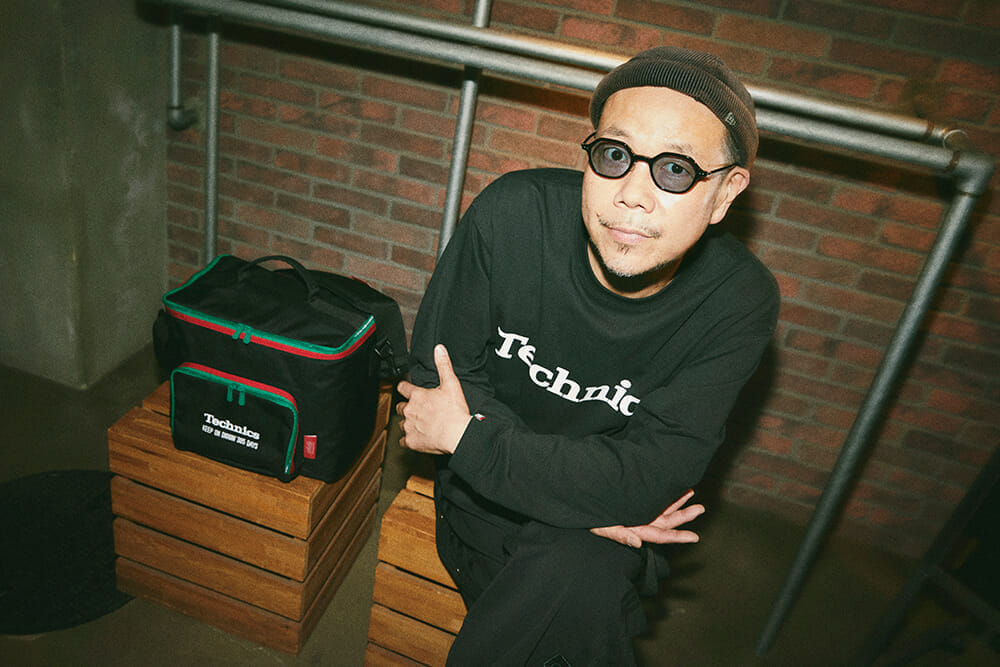


![【FOCUS IT.] Kunichi Nomura and Nigel Graff chose 108 people who look good in glasses. The unknown secret story behind the production of "ONE HUNDRED EIGHT CLUB".](https://www.houyhnhnm.jp/wp-content/uploads/2025/06/250613_focusit-700x394.jpg)
![【FOCUS IT.] Goldwyn's new "koto" project in Toyama. Goldwyn's new project in Toyama, "Play Earth Park Naturing Forest," is now in full view!](https://www.houyhnhnm.jp/wp-content/uploads/2025/05/1200-675px-700x394.jpg)
![【FOCUS IT.] A new landmark in Sasazuka. Why "Handsome," a barbershop by hair and makeup artist AMANO, aims to become a local community spot.](https://www.houyhnhnm.jp/wp-content/uploads/2025/05/ho_32039-700x467.jpg)
![【FOCUS IT.] Vast and profound, bold and precise, philosophical, mystical and scientific. The world of the genius manga artist Shirow Masamune.](https://www.houyhnhnm.jp/wp-content/uploads/2025/05/Frame-1-700x394.jpg)
![【FOCUS IT.] Kimmy, a brand that breathes new life into textiles from every era. We ask designer Kim Hyo-su about his approach to making clothes.](https://www.houyhnhnm.jp/wp-content/uploads/2025/05/HOUYHNHNM_KIMMY_25040915513_fin-700x467.jpg)
![【FOCUS IT.]Choosing to travel to Okinawa in the spring: 3 pleasures I experienced at the Iriomotejima Hotel by Hoshino Resort in April.](https://www.houyhnhnm.jp/wp-content/uploads/2025/04/IMG20250411154800-2-700x525.jpg)
